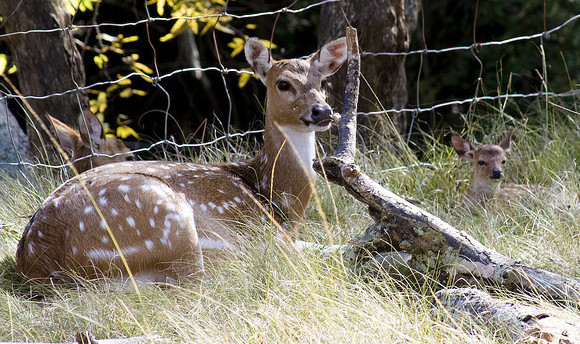
One of the more disturbing aspects of the SARS-CoV-2 coronavirus is its ability to readily hop between a variety of species, ranging from domesticated animals like cats and mink to wild deer. This creates a potential risk. While spreading in other animals, the virus can pick up mutations that make it look unfamiliar to the human immune system or evolve to cause a different collection of symptoms.
These risks, however, depend on the virus being able to move back to humans after evolving in a different host. And, so far, the only cases where that's known to have happened all involve people who have worked on mink farms. But a pre-peer-review manuscript is now indicating that Canadian health authorities have identified an instance where a SARS-CoV-2 variant circulating in deer ended up back in a human patient.
Deer season
In response to findings in the US, where SARS-CoV-2 appears to be widespread in both wild and farmed deer populations, Canadian health authorities decided to initiate screening of their own deer population. During the last two months of 2021, which overlapped with deer hunting season, samples were collected from nearly 300 deer killed by hunters; those were all screened for the presence of SARS-CoV-2.
The good news is that, in contrast to events south of the border, the presence of the virus appears to be relatively low, with only six percent of the samples producing a positive test result.
Things got less reassuring when the researchers obtained genomes from some of these samples. All turned out to be distantly related from the rest of the SARS-CoV-2 family tree—roughly as distant from the common ancestor of the pandemic as the omicron variant is. Their closest relatives turned out to be a lineage that had spread from humans to mink in Michigan that had been identified about a year earlier. But in the intervening time, the lineage had picked up 76 additional mutations—in fact, all the genomes had some small differences with each other.
The team also found a single additional genome belonging to this same lineage. This one was isolated from a human during the same time period and in the same region as the survey of deer. The individual had had contact with deer, suggesting the virus may have jumped back from deer to humans.
Threat assessment
If the virus were evolving to adapt to deer as a new host, it might pick up mutations that enable it to spread more readily in that species. But there's little evidence that it's doing so. The mutations it has picked up appear to be spread randomly throughout the genome—the frequency with which a gene carried a mutation was proportional to the gene's size. And there was no clear bias for mutations that changed a protein vs. those that were neutral.
The researchers also tested the spike protein encoded by the deer variant and found that it was effectively neutralized by antibodies made by vaccinated individuals. So, all indications are that this variant doesn't pose a distinct risk to human populations.
That said, the research indicates that this virus had circulated among animals for roughly a year prior to jumping back into humans. Which means that, even if we were to ever limit the virus's circulation in humans, we'd still potentially be at risk of infection. As the researchers put it, "Secondary wildlife reservoirs have the potential to fundamentally alter the ecology of SARS-CoV-2."
While that's safe to conclude from the existing data, it's important to emphasize that the data is only a very incomplete picture of what's going on. While the researchers identified 21 deer carrying SARS-CoV-2, they managed to obtain genomes from only five of them. And they note that, by the time deer hunting season wrapped up in Ontario, the omicron wave had hit, meaning that tracking human cases was probably limited as well.
As such, it's difficult to be certain that this variant spread from deer to human and not the other way around or whether there really was a single instance of a human infected with this variant. The work should also serve as a caution that we still need to improve our ability to monitor the spread of variants—both in humans and in other species prone to infection.
Researchers may have ID’ed first deer-to-human SARS-CoV-2 transmission - Ars Technica
Read More

No comments:
Post a Comment